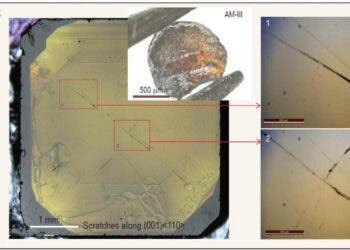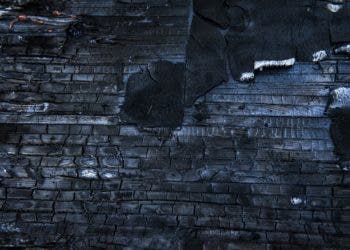An international team of researchers has developed a method of combining carbon nanotubes (CNTs) with other materials that doesn’t degrade the tubes. The process involves mixing the CNTs in a liquid solution and then dripping it on an absorbent substrate, forming a “felt”-like 3D structure.
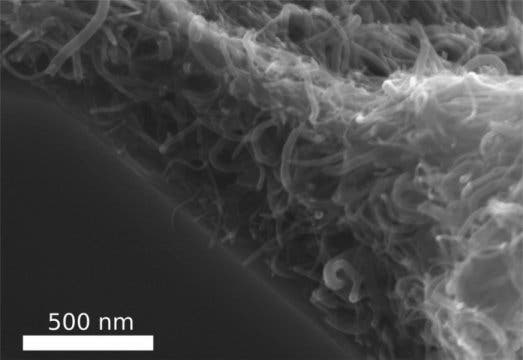
Image credits Schütt F. et al., 2017, N.Comm.
For many applications, CNTs are a material scientist’s equivalent of a holy grail. These tiny, deceptively simple structures of carbon atoms are some of the best electrical conductors we’ve ever discovered and come with incredible strength and stiffness while also being super-lightweight to boot. It’s a unique blend of properties that would be really useful in all sorts of applications, from durable plastics and lightweight batteries through to novel medical implants and wearable electronics.
The tubes, sadly, also come with a fine print that has largely prevented such uses up to now: CNTs simply don’t mix well with others. They either can’t be combined adequately with other materials or lose most of their usefulness following admixture. The same chemical structure that generates CNTs’ incredible properties is very sensitive to changes and will break or alter when chemically tied to other substances. Researchers from the Functional Nanomaterials working group at Kiel University (CAU) and the University of Trento believe they’ve found a workaround to the issue — instead of tying CNTs to other substances, they’ve developed a method that felts CNTs into a stable 3D network which can be used as-is or later combined with other materials.
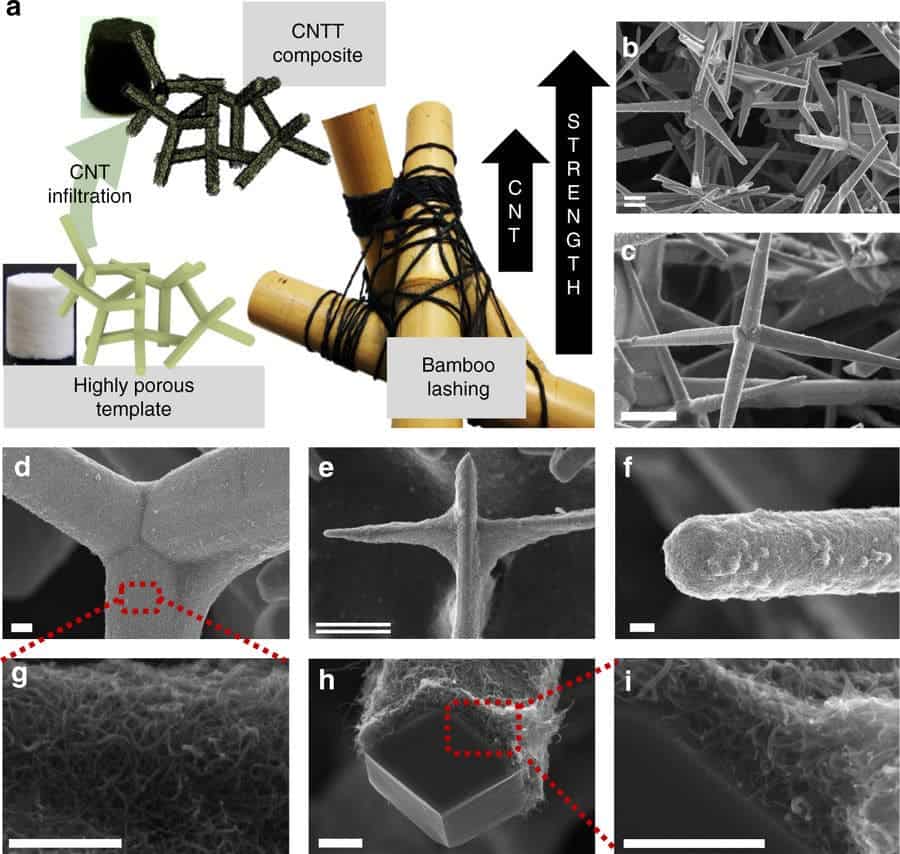
Image credits Schütt F. et al., 2017, N.Comm.
“Although carbon nanotubes are flexible like fibre strands, they are also very sensitive to changes,” explained Professor Rainer Adelung, head of the Functional Nanomaterials working group at CAU. “With previous attempts to chemically connect them with other materials, their molecular structure also changed. This, however, made their properties deteriorate — mostly drastically.”
The process is based on a simple chemical wet infiltration process. CNTs are mixed with water and dripped onto an extremely porous ceramic material substrate (made of zinc oxide, a readily-available substance). The substrate draws in the moisture, forcing the CNTs to deposit on top of one another and form a stable layer, a method reminiscent of felting.
But the important question is, ‘does the CNT-felt deliver?’ According to the team, yes, big time. They showed that the nanotube-coated ceramic scaffold is massively more resilient than the original substrate, and can bear 100,000 times its own weight. The substrate on its own could hold around 50 grams (1.76 oz), but the CNT coating increased its carrying capacity to 7.5 kg (16.53 pounds) — a stunning 15,000% increase. All that extra load-bearing ability is owed to the carbon nanotubes transforming compressive forces to tensile forces, the team explains. In other words, the weight pushing down on the material has to spread among the countless entwined CNTs and pull them apart before it can actually squash the material.
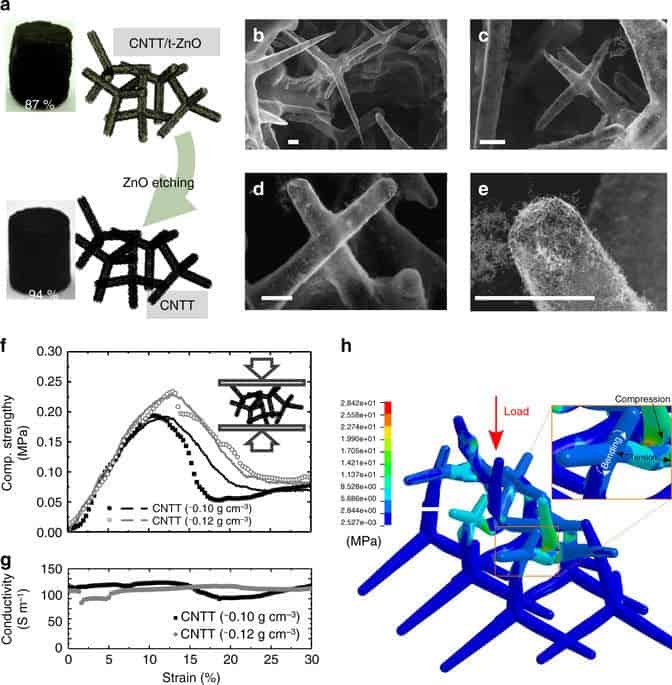
Image credits Schütt F. et al., 2017, N.Comm.
In the second step of their process, the team chemically etched through the ceramic substrate to increase the overall surface of the CNT felt produced. The result was a 3D tube network composed of layers of CNTs, whose hollow spaces can be later filled with polymers. The team reports that their felting process greatly increases the CNTs’ chemical stability, allowing their networks to be mechanically combined with polymers without damaging the CNTs’ chemical structure.
“We basically pack the surface of an entire beach volleyball field into a one centimetre cube,” explained Schütt. “We can specifically arrange the CNTs and manufacture an electrically conductive composite material. To do so only requires a fraction of the usual quantity of CNTs, in order to achieve the same conductivity,” said Schütt.
The team is especially excited about their work’s potential application in medicine. Regenerative medicine, in particular, could stand to benefit a lot from the CNT frameworks, as the researchers say it’s “conceivable” their frameworks could form implants to “stimulates bone or heart cells to grow.” Furthermore, due to its simplicity, they think the process can be used with other nanomaterials as well. If true, it could usher in a whole new range of nanomaterial networks and possibilities.
The paper “Hierarchical self-entangled carbon nanotube tube networks” has been published in the journal Nature Communications.


